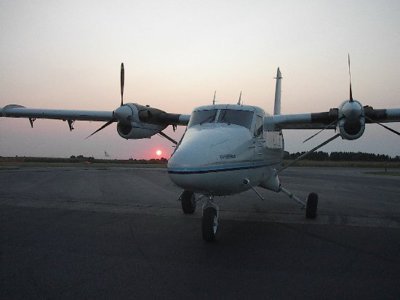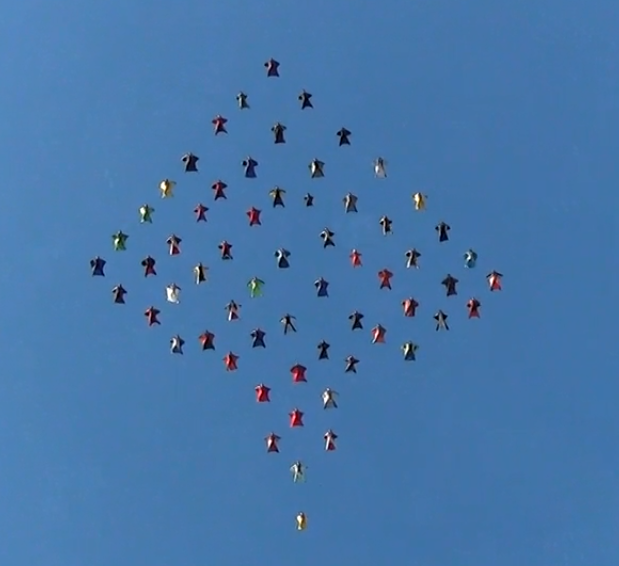Derekbox 0
In part 121/135 these limits are strictly enforced, by law and have to be followed, it is also pretty closely regulated. In part 91, these limits are often merely guidelines. When a PT6 in the 135 side has timed out, it still has thousands of hours left on it in the part 91 world.
riggerrob 558
Maintenance schedules are a complex process. Some are based on hours, some are based on number of landings, some are based on number of starts, some are based on number of years.
Any maintenance schedule is - at best - and "educated guess" at how the airplane will be operated/abused/etc.
At a bare minimum, every airplane should be inspected once a year. This makes sense for privately owned airplanes that barely fly 50 hours per year, so wear and tear is not much of an issue. Instead, under-utilized, privately-owned airplanes suffer far more from rust, rot, robins' nests and UV damage.
Similarly, corrosion can be a major limiting factor in the life of a component. For example, the undercarriage legs of a King Air must be over-hauled every five years. This mainly to inspect for corrosion and replace dried out hydraulic seals, but at $4,500 per leg, it can be a painful financial burden for a DZO!
The next "best guess" is based on the number of hours flown.
The next "best guess" is the number of times an engine is started. Since engine components allways heat up and cool down at different rates (than the components they rub against), starts are usually the single most important wear event in an engine's life. Ergo, turbine owners often count an engine start as being equal to an hour's worth of cruising.
Other maintenance schedules are based on metal fatigue, i.e. "How many times has this piece of metal been flexed?"
Cycle-based maintenance counts the number of landings or the number of times a cabin has been pressurized.
In recent years, aircraft manufacturers have tended towards "on condition" maintenance, which involves far more inspections that are far more expensive (i.e. X-ray instead of a mere visual inspection), but in the long run allow component replacement schedules to be much longer.
Trend monitoring computers can even tell maintainers when a hard landing counts for as many as one hundred soft landings.
The latest trend involves installing trend-monitoring computers that count the number of hot-cold cycles, or the number of times a transmission was over-torqued, or the number of hard landings, etc. Trend-monitoring allows operators to keep components in service long after their scheduled TBO (time between overhaul) as long as temperatures and pressures are within limits, but over-temp a component once and you are in for an expensive overhaul!
Derekbox 0
QuoteAny maintenance schedule is - at best - and "educated guess" at how the airplane will be operated/abused/etc.
Developing a maintenance schedule is more like trying to solve a Rubix cube blindfolded. The airframe maintenance manual should spell out the maintenance intervals, but on most all older aircraft it doesnt. You have to refer to the individual manuals for the components and put it all together. Much of it indeed is on condition, but the criteria for what is acceptable and what is not... ??
Icon134 0
I've done this... its really not as hard as you'd think...QuoteQuoteAny maintenance schedule is - at best - and "educated guess" at how the airplane will be operated/abused/etc.
Developing a maintenance schedule is more like trying to solve a Rubix cube blindfolded.
www.diverdriver.com
ATP/D-19012
FB #4125
kallend 1,623
QuoteWe used to have to track not only "cycles" (starts and stops) but also takeoffs and landings as we ran the engines all day. They called it an "abbreviated cycle". This allowed for adjusting the "cycles" so as to not cause a maitenance burden that was not realistic.
The materials used for the hot end of a turbine engine are very complex, typically being nickel alloys with additions of chromium, titanium, aluminum, molybdenum, and carbon, and sometimes hafnium, iron, vanadium or niobium. They are heat treated to develop specific microstructures for high temperature strength, which are subject to change during the life of the component, both as as result of exposure to elevated temperatures over long periods of time, and also as a result of thermal cycling. Add in other interacting factors like oxidation and stress, and you have a highly complex system that is not amenable to exact quantitative analysis or even laboratory simulation in a timeframe that is economic.
In other words, what an operator can do to the alloys in his engines is something that may never have been tested in any laboratory.
The only sure way to survive a canopy collision is not to have one.
For those non-turbine pilots out there, that's less than 60% of maximum power available from a new -20. It's been just a matter of time until a jump plane with 20's crashed due to this type of "on condition" operation. If the engine is producing full power, that's a different story. But most 20's are not.
Unfortunately the lawyers don't bother to educate themselves enough and just make the blanket statement that all P&W's are not suitable which is ridiculous.
http://www.skydiveatlanta.com
http://www.musiccityskydiving.com
People really need to take a long look at how they operate their equipment and decide if it's worth it to pay money now or pay in lives later.
But does your comment have to do with the sullivan crash in particular or is it a comment about turbine jump planes in general?
edit: After rereading your post I think you're saying the lawyers for P&W were saying it not the lawyers suing P&W for the Sullivan accident. Right?
www.diverdriver.com
ATP/D-19012
FB #4125
Unstable 8
QuoteThe issue the lawyers were attempting to go after is that the Sullivan Otter had -20's on it. Dash 20's woefully underpower an Otter when they are not kept within the overhaul limits. For years operators have gotten away with takeoff power of 26-28 lbs torque (Otter) and 750-800 ft/lbs. torque (King Air) and jump pilot's were known to say, "If we ever lose an engine, the other one is only going to take us to the crash site."
For those non-turbine pilots out there, that's less than 60% of maximum power available from a new -20. It's been just a matter of time until a jump plane with 20's crashed due to this type of "on condition" operation. If the engine is producing full power, that's a different story. But most 20's are not.
Unfortunately the lawyers don't bother to educate themselves enough and just make the blanket statement that all P&W's are not suitable which is ridiculous.
Oh Really!?!? I'm just down the road from Sullivan, and this whole incident hit home to me.... I'm not trying to turn this thread into another Sullivan thread, my goal was to find out about the PT-6 engine, but this information does shine a lot of light on my initial question...
Diverdriver..... Are most pilots educated on what their aircraft needs to survive an engine out situation? What type of 'on condition' loopholes do operators get away with this under?
QuoteThe issue the lawyers were attempting to go after is that the Sullivan Otter had -20's on it. Dash 20's woefully underpower an Otter when they are not kept within the overhaul limits. For years operators have gotten away with takeoff power of 26-28 lbs torque (Otter) and 750-800 ft/lbs. torque (King Air) and jump pilot's were known to say, "If we ever lose an engine, the other one is only going to take us to the crash site."
For those non-turbine pilots out there, that's less than 60% of maximum power available from a new -20. It's been just a matter of time until a jump plane with 20's crashed due to this type of "on condition" operation. If the engine is producing full power, that's a different story. But most 20's are not.
Ummm... are you saying that's what happened in the Sullivan Crash... or are you sure that's what happened... or is it just speculation? Is it wise to post such stuff with lawsuits still pending?
QuoteOh Really!?!? I'm just down the road from Sullivan, and this whole incident hit home to me.... I'm not trying to turn this thread into another Sullivan thread, my goal was to find out about the PT-6 engine, but this information does shine a lot of light on my initial question...
Diverdriver..... Are most pilots educated on what their aircraft needs to survive an engine out situation? What type of 'on condition' loopholes do operators get away with this under?
Not sure if it's a "loophole" but skydiving is Part 91 and there is no requirement to follow TBO in part 91. I know I've posted accident reports on my list that the engine was many hundreds of hours over TBO.
So we have two issues. Inspection cycles and TBOs. Some parts are based on cycles not hours. It can be a complex world of numbers and that's why everyone operating these planes needs to have a way of CLEARLY knowing when inspections are due or parts replaced. It needs to be open and transparent. One of my first jobs as a flight instructor at my first flight school was to make a big board with all the inspection times clearly shown so all customers and instructors knew when things were coming up so nothing ran over. We all became participants in keeping things legal. The school had the responsibility but more eyes were put on the issue.
And as long as engines are developing proper power I actually think running jump planes on condition is ok. However, the people operating them need to have the integrity not to put aircraft up that have known deficiencies such as engines developing way below normal power. When an accident occurs and it is shown that there was a known problem we as an industry lose integrity and that when greater scrutiny comes about.
www.diverdriver.com
ATP/D-19012
FB #4125
QuoteDoes it really have anything to do with being a -20?
Yes it does. A -20 has an ESHP (equivalent shaft horsepower rating) of 550 and a max take-off temp of 750 C, max operating/climb/cruise of 680 C. The -27/28 has the same temp limits with a 675 ESHP.
The 27/28 has a much stronger compressor section and different hot, so develops the same power with a much lower temp. Therefore you have much more margin for deterioration while still making power. Even when well past manufacturer's TBO. As the -20 deteriorates over time it simply cannot develop 550 HP with outside air temps of over 80-85 F. I have seen this time and time again.
Now consider this. A 9650 lb max gross King Air powered with -20's that make about 850 ft/lbs torque on one side and 900 on the other climbs on an 85 F day at around 800-1,000 FPM. A Twin Otter max gross is between 11,500 and 12,500 depending on the model with those same engines. I've flown Twin Otters like this that made a 700 FPM climb after take-off. You have zero margin for an engine loss and you pray every time you take-off.
Young pilots looking to build turbine time will fly a horse turd with wings if it has a turbine attached.QuoteWhy would any pilot continue flight in a plane that was not developing rated take-off power?
Now please understand, until the final NTSB investigation is complete, we won't know what the actual cause of the Sullivan crash was. I was speculating as to the lawyer's argument with regards to P&W. After re-reading my original post I should've been more clear about my speculation versus my fact based commentary.
http://www.skydiveatlanta.com
http://www.musiccityskydiving.com
Now let me clear up mine. When I asked does it matter you said yes it does. What I should have made more of a point of is that ANY engine not making the power you are expecting given the temp/pressure conditions should be looked at closely and if it is well below what you expect you should not fly it. I know about "tired" engines but from what you said these engines only producing 25 pounds of Tq should have been grounded long ago.
So, the lawyers from P&W say that -20 engines should not be used on twin otters in skydiving ops? Wow. They designed the thing with skydiving in mind for the Canadian military. It was good enough then. What they should be pressing is the insurance company to mandate the TBO for insurance. It's easier and better than having the FAA do it.
And I have flown both -20 and -27 PT-6s on Otters.
www.diverdriver.com
ATP/D-19012
FB #4125







Yes, that was funny.
But...mark my words:
Skydiving will be killed. Not by the USPA, not by the FAA, not by airport general managers...but by lawyers.
Better get the jumps while the jumps are good.
I think we're all Bozos on this bus.
Falcon5232, SCS8170, SCSA353, POPS9398, DS239
Share this post
Link to post
Share on other sites